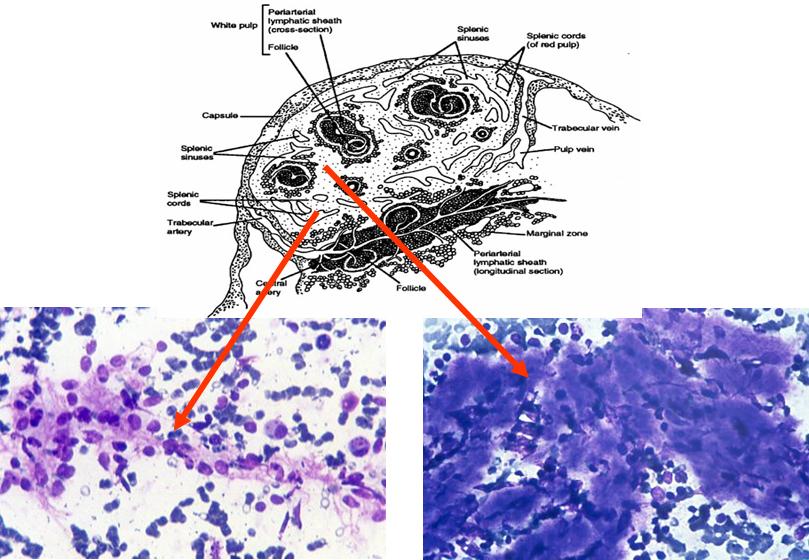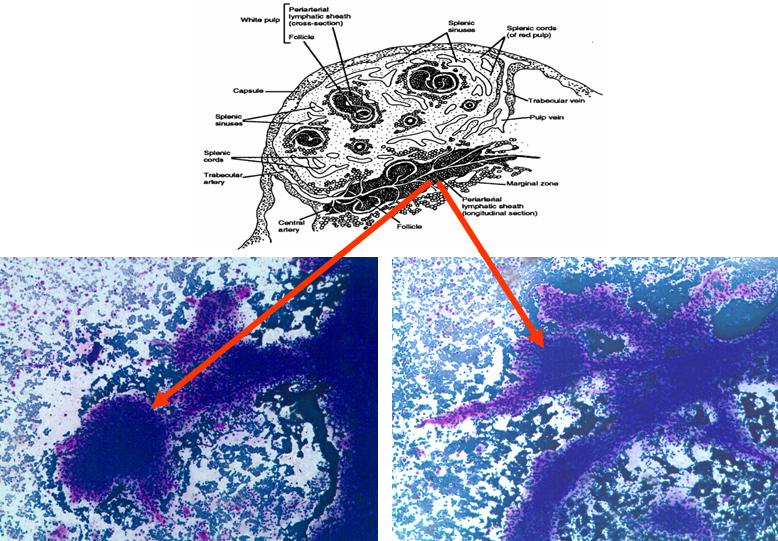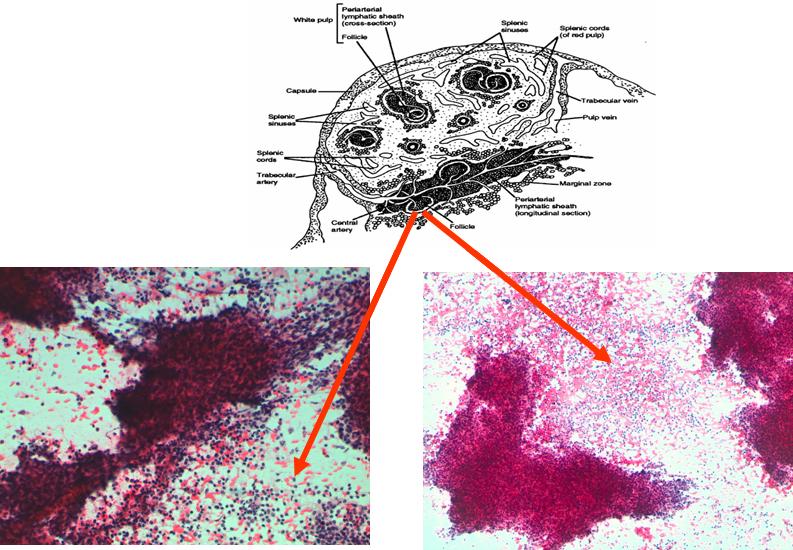Normal constituents
The constituents of the red pulp are generally poorly represented on sFNC, while platelets, macrophages and scattered fibrous or endothelial cells may be observed. The white pulp is represented by dense fragments of tightly packed lymphoid cells, with nuclear details observable only at the edges of the fragments. Invariably one or two vascular structures enter these groups, which represent the periarteriolar lymphoid sheaths (PALS). Other than PALS, scattered lymphoid cells in different stages of maturation may be present on the smear, representing the B-cell component. PALS and scattered lymphoid cells may vary quantitatively at different ages and in different immunologic stages, being numerous in childhood and in heightened immunologic stages.
Red pulp
Red pulp is scantily represented on cytological smears: sinus histiocytes, occasional endothelial cells and groups of platelets.

White pulp
White pulp is mainly represented by dense fragments of lymphoid cells tightly attached to each other with one or two vascular structures entered the groups; nuclei are observable only at the edge of the fragments. These fragments are the cytological counterpart of periarteriolar lymphoid sheaths (PALS) which represent the T zone of splenic white pulp.

White pulp: follicle cells
White pulp is also represented by dispersed lymphoid cells at various grades of maturation, which mainly represent the follicular, B-cells, of white pulp.


